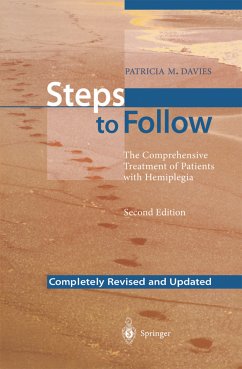This new edition of a best-selling guide incorporates significant advances in the early and later rehabilitation of neurologically impaired patients. Based on the Bobath concept, Davies' approach to rehabilitation stresses the need to equip the patient for a full life, rather than setting arbitrary goals for functioning in a sheltered environment. Activities are described for correcting abnormal movement patterns and facial difficulties. Ways to regain walking, balance and other normal movement sequences are explained and demonstrated with 750 photographs of patients being treated.
A true paradigm shift is taking place in the field of neurology. Earlier it was regarded as the science of exact diagnosis of incurable illnesses, re signed to the dogma that damage to the central nervous system could not be repaired: "Once development is complete, the sources of growth and regeneration ofaxons and dendrites are irretrievably lost. In the adult brain the nerve paths are fixed and immutable - everything can die, but nothing can be regenerated" (Cajal1928). Even then this could have been countered with what holds today: rehabilitation does not take place in the test tube, being supported only a short time later by an authoritative source, the professor of neurology and neurosurgery in Breslau, Otfried Foerster. He wrote a 100-page article about thera peutic exercises which appeared in the Handbuch der Neurologie (also published by Springer-Verlag). The following sentences from his intro duction illustrate his opinion of the importance of therapeutic exercises and areclose to our views today (Foerster 1936): "There is no doubt that most motor disturbances caused by lesions of the nervous system are more or less completely compensated as a re sult of a tendency inherent to the organism to carry out as expedient ly as possible the tasks of which it is capable under normal circum stances, using all the forces still available to it with the remaining un damaged parts of the nervous system, even following injury to its sub
Hinweis: Dieser Artikel kann nur an eine deutsche Lieferadresse ausgeliefert werden.
A true paradigm shift is taking place in the field of neurology. Earlier it was regarded as the science of exact diagnosis of incurable illnesses, re signed to the dogma that damage to the central nervous system could not be repaired: "Once development is complete, the sources of growth and regeneration ofaxons and dendrites are irretrievably lost. In the adult brain the nerve paths are fixed and immutable - everything can die, but nothing can be regenerated" (Cajal1928). Even then this could have been countered with what holds today: rehabilitation does not take place in the test tube, being supported only a short time later by an authoritative source, the professor of neurology and neurosurgery in Breslau, Otfried Foerster. He wrote a 100-page article about thera peutic exercises which appeared in the Handbuch der Neurologie (also published by Springer-Verlag). The following sentences from his intro duction illustrate his opinion of the importance of therapeutic exercises and areclose to our views today (Foerster 1936): "There is no doubt that most motor disturbances caused by lesions of the nervous system are more or less completely compensated as a re sult of a tendency inherent to the organism to carry out as expedient ly as possible the tasks of which it is capable under normal circum stances, using all the forces still available to it with the remaining un damaged parts of the nervous system, even following injury to its sub
Hinweis: Dieser Artikel kann nur an eine deutsche Lieferadresse ausgeliefert werden.








